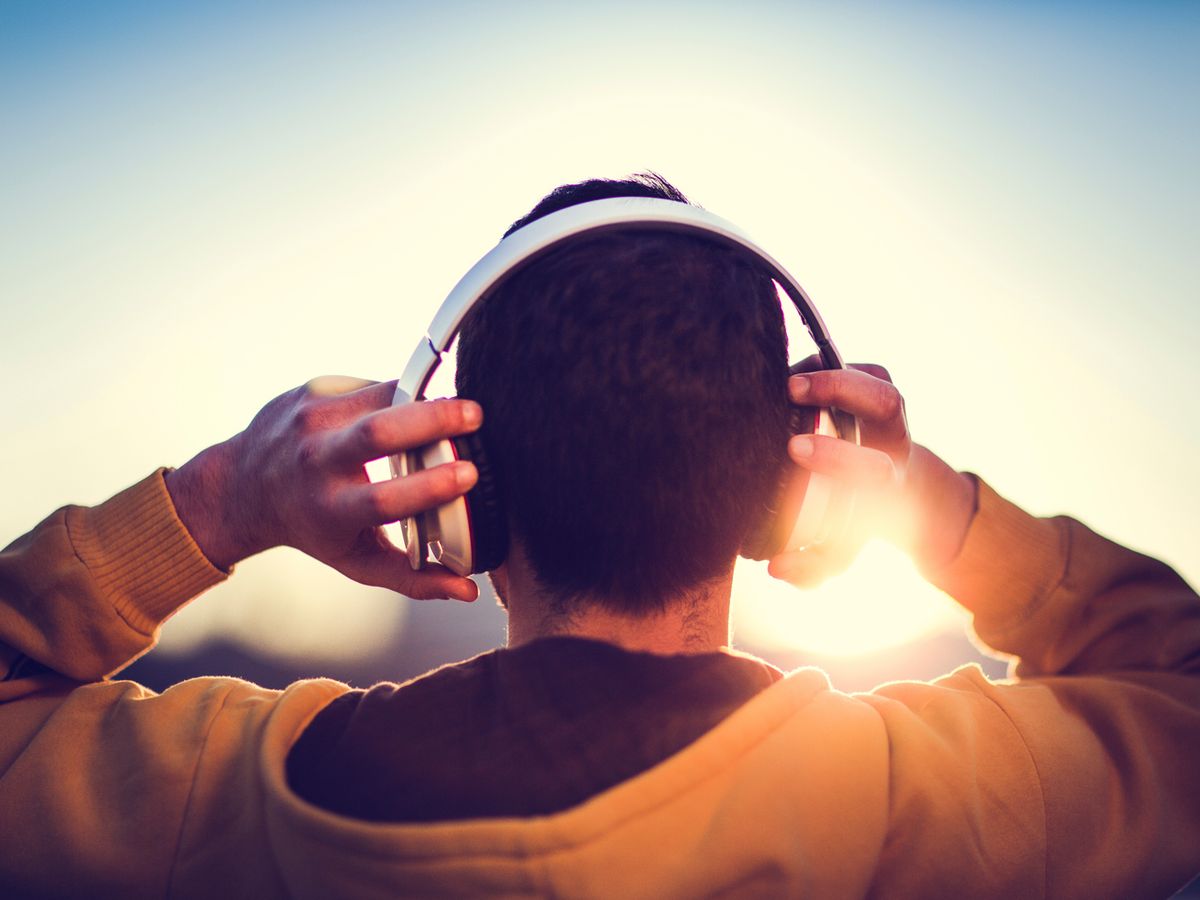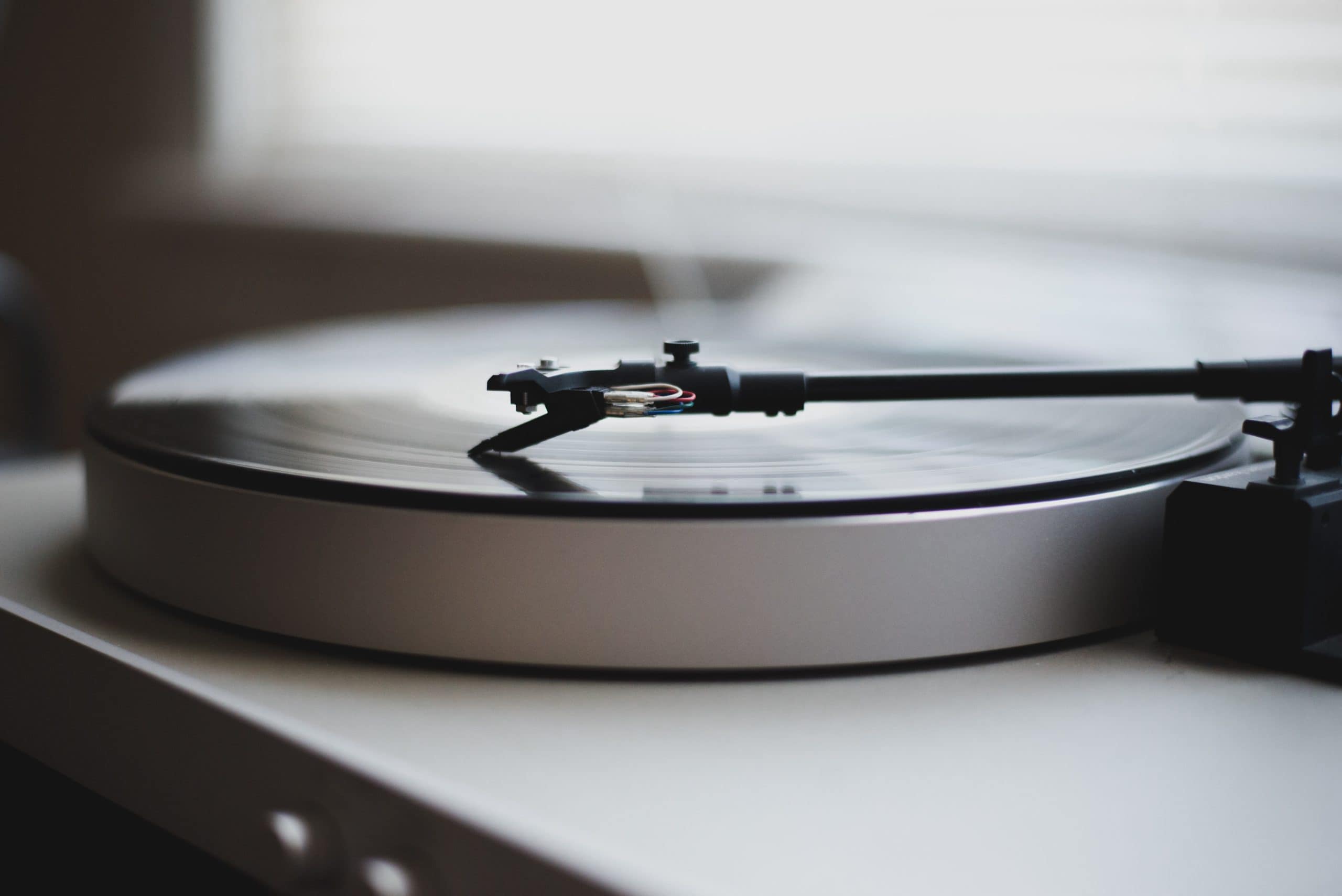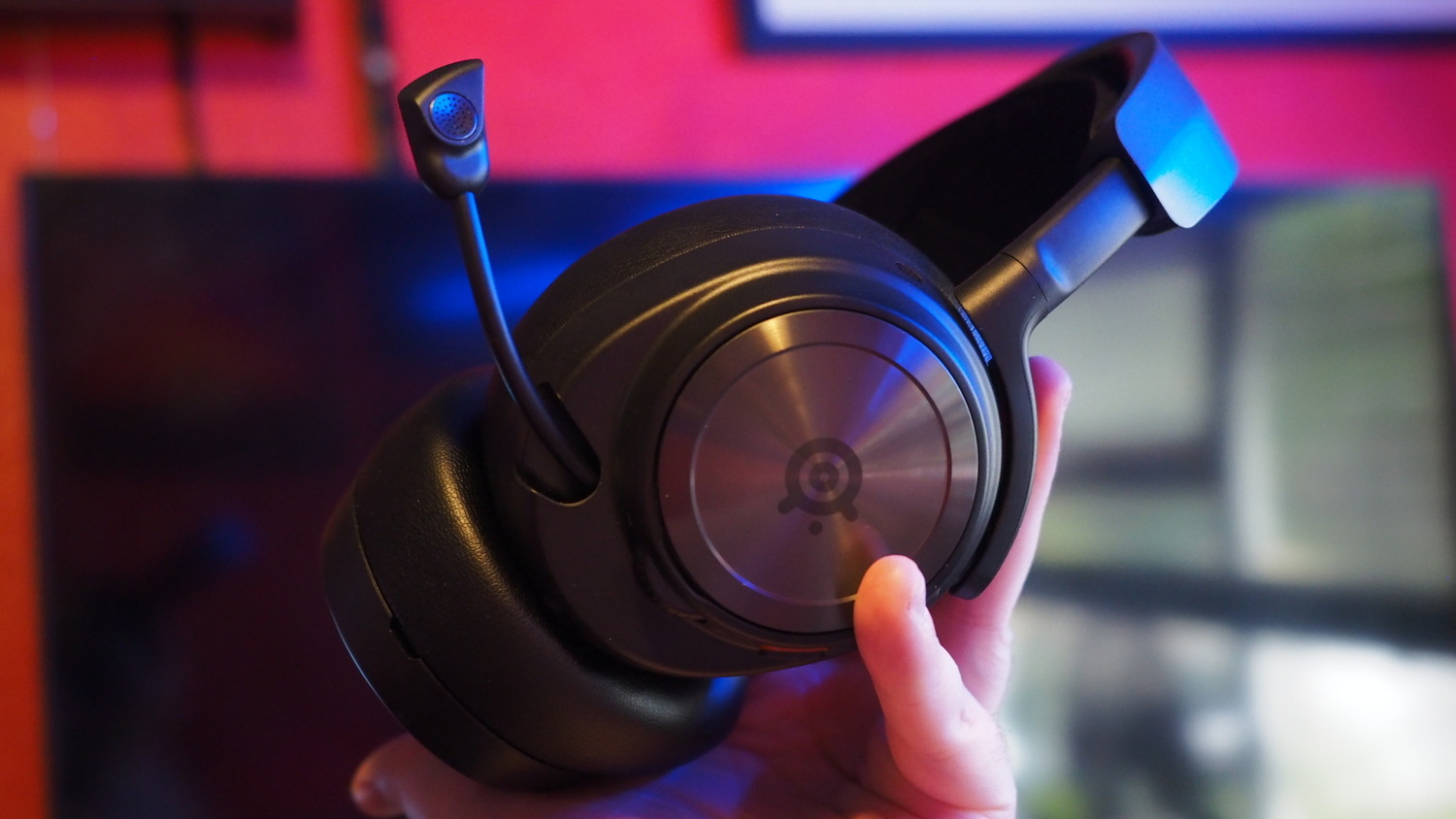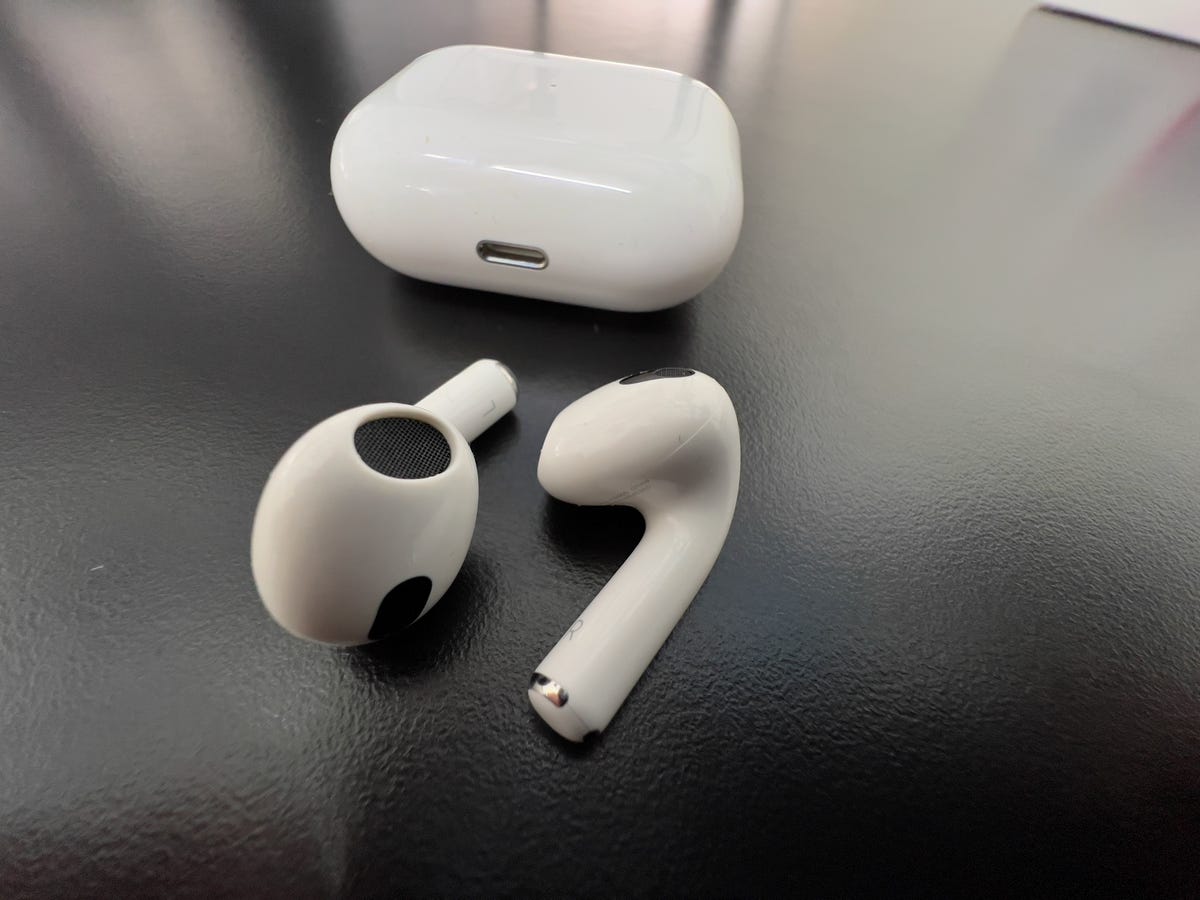Home>Production & Technology>Noise Cancellation>Why Do Headsets Have Terrible Noise Cancellation


Noise Cancellation
Why Do Headsets Have Terrible Noise Cancellation
Modified: January 22, 2024
Discover why headsets often have poor noise cancellation and learn more about the importance of noise cancellation for optimal audio experience.
(Many of the links in this article redirect to a specific reviewed product. Your purchase of these products through affiliate links helps to generate commission for AudioLover.com, at no extra cost. Learn more)
Table of Contents
Introduction
Headsets are an essential accessory for many people, whether they are used for professional purposes like conference calls or personal enjoyment like listening to music or playing games. However, one of the biggest frustrations that users often encounter is poor noise cancellation. It can be incredibly frustrating to have background noise intrude on your conversations or music, negating the purpose of using a headset in the first place.
Noise cancellation technology has come a long way in recent years, but it still leaves much to be desired. Understanding why headsets have terrible noise cancellation requires diving into the intricacies of the technology and exploring the various factors that contribute to its effectiveness.
In this article, we will explore the ins and outs of noise cancellation in headsets, the factors influencing its performance, and potential solutions to improve it. By gaining a deeper knowledge of these aspects, you will be better equipped to make informed decisions when purchasing a headset and understanding why certain models perform better than others in terms of noise cancellation.
Understanding Noise Cancellation
Noise cancellation technology works by using microphones to capture ambient sounds and then generating an opposing sound wave, which effectively cancels out the unwanted noise. This process is known as active noise cancellation (ANC) and is designed to reduce or eliminate low-frequency sounds like the hum of an air conditioner or the rumble of a plane engine.
The key principle behind ANC is phase cancellation. Sound waves are characterized by their amplitude (volume) and frequency (pitch). When two sound waves with equal amplitude and opposite phases meet, they cancel each other out. This is how noise cancellation works in headsets. The headset’s microphone picks up the ambient noise, and the ANC technology generates an equal but opposite sound wave, effectively canceling out the unwanted noise.
It’s important to note that noise cancellation technology is most effective against constant, low-frequency sounds. Loud, sudden noises or high-frequency sounds like voices and music can be challenging to cancel out due to their dynamic nature. This is why noise cancellation in headsets primarily targets consistent background noise rather than conversations or music.
There are two types of noise cancellation: passive and active. Passive noise cancellation is achieved through physical components like thick ear cups and padding that create a barrier between your ears and the surrounding noise. Active noise cancellation, as mentioned earlier, utilizes microphones and speakers to generate sound waves that counteract the ambient noise.
While ANC technology has significantly improved over the years, achieving effective noise cancellation is still a complex process. A combination of factors influences the success or failure of noise cancellation in headsets, and understanding these factors is crucial in comprehending why some headsets perform better than others in this aspect.
Factors Influencing Noise Cancellation in Headsets
Several factors come into play when considering the effectiveness of noise cancellation in headsets. Understanding these factors will give us insight into why some headsets have better noise cancellation capabilities than others.
1. Quality of Microphones: The quality of the microphones used in the headset plays a significant role in capturing the ambient noise accurately. Higher-end headsets often come equipped with multiple microphones strategically placed to capture sound from different directions. This allows for more precise noise cancellation by providing a clearer representation of the surrounding noise.
2. Signal Processing: The signal processing technology employed in the headset’s noise cancellation system is crucial. Sophisticated algorithms can effectively analyze the captured ambient noise and generate the appropriate anti-noise signals to cancel it out. The quality of the signal processing determines the accuracy and efficiency of the noise cancellation capabilities.
3. Fit and Seal: The fit and seal of the headset on the user’s ears play a vital role in determining the effectiveness of passive noise cancellation. If the ear cups do not create a tight seal, sound can leak in, reducing the overall effectiveness of noise cancellation. It’s important to choose a headset that fits comfortably and snugly to maximize passive noise cancellation.
4. Frequency Range: Different headsets have varying capabilities in canceling out noise across different frequency ranges. Some headsets may excel at canceling out low-frequency sounds, while others may struggle with higher-pitched noises. Understanding the frequency range in which a headset performs best in terms of noise cancellation can help users make better choices based on their specific needs.
5. Battery Life: Active noise cancellation requires power, usually provided by a built-in battery in the headset. The battery life of the headset is an essential consideration, as it determines how long the noise cancellation feature can be used before needing a recharge. Longer battery life allows for more extended periods of noise cancellation without interruption.
6. Build Quality and Materials: The build quality of the headset and the materials used can influence noise cancellation as well. Headsets constructed with high-quality materials can effectively block out external noise and prevent sound leakage. On the other hand, headsets with cheaper materials may not provide the same level of noise isolation.
By considering these factors when purchasing a headset, users can make informed decisions based on their noise cancellation requirements and preferences. Additionally, manufacturers can focus on improving these factors to enhance the noise cancellation capabilities of their headsets.
Quality of Microphones
The quality of the microphones used in a headset has a significant impact on the effectiveness of noise cancellation. The microphones are responsible for capturing the ambient sound and transmitting it to the noise cancellation system for processing.
High-quality microphones are designed to capture sound with exceptional clarity and accuracy. They have superior sensitivity, which allows them to pick up even the faintest of sounds. This is essential for capturing the surrounding noise accurately, enabling the noise cancellation algorithm to generate precise anti-noise signals.
Headsets with multiple microphones strategically placed can capture sound from different directions, enhancing the noise cancellation capabilities. By analyzing the sound from various angles, the system can discern which noise needs to be canceled and generate the appropriate signal to counteract it.
Noise cancellation algorithms rely heavily on the accurate representation of ambient noise. If the microphones fail to capture the sound accurately, the generated anti-noise signals will not effectively cancel out the noise. This results in subpar noise cancellation performance.
Another crucial aspect of microphone quality is noise rejection. Headsets with advanced microphones have features that help reduce capturing unwanted noise or interference. This is important in environments with high ambient noise, such as crowded offices or public transportation, where the microphones need to focus on capturing the target sound and filtering out irrelevant noise.
Ultimately, the quality of the microphones directly affects the overall noise cancellation performance of the headset. High-end headsets often invest in superior microphone technology to ensure optimal noise cancellation capabilities. On the other hand, budget-friendly headsets may compromise on microphone quality to lower production costs, resulting in reduced noise cancellation effectiveness.
When choosing a headset for noise cancellation, it is recommended to research and read reviews to ensure that the microphones used are of high quality. This will provide you with a better understanding of how well the headset can capture and cancel out ambient noise, helping you make an informed decision.
Limitations of Noise Cancellation Technology
While noise cancellation technology has advanced significantly in recent years, it still has its limitations. Understanding these limitations is essential to set realistic expectations and avoid disappointment when using noise cancellation headsets.
1. Effectiveness against Certain Sounds: Noise cancellation technology is most effective against constant, low-frequency sounds like the hum of an air conditioner or the rumble of a plane engine. However, it can struggle with loud, sudden noises or high-frequency sounds like voices and music. Canceling out dynamic noises requires real-time analysis and adaptation, which is challenging to achieve with current noise cancellation systems.
2. Battery Dependency: Active noise cancellation relies on power from a built-in battery in the headset. This means that noise cancellation features may become unavailable when the battery runs out or when it is turned off to conserve power. Users need to factor in battery life when considering using noise cancellation for extended periods or in locations where access to charging is limited.
3. Leakage of Sound: Despite efforts to create a tight seal and provide effective passive noise cancellation, some headsets may still allow some sound to leak in or out. This can reduce the overall effectiveness of noise cancellation and compromise the user’s experience. It’s important to find a headset that fits properly and provides a secure seal to minimize sound leakage.
4. Environmental Factors: Noise cancellation can be influenced by the environment in which it is used. For example, in very noisy environments, the microphones may struggle to accurately capture the ambient noise, resulting in less effective noise cancellation. Additionally, if the headphones are not worn properly, environmental sounds may still leak into the user’s ears, reducing the impact of noise cancellation. Understanding these environmental factors can help manage expectations for noise cancellation performance.
5. Cost and Pricing: Noise cancellation technology adds to the cost of manufacturing headsets. Higher-priced headsets often provide better noise cancellation capabilities due to the inclusion of higher quality components and more advanced algorithms. Cheaper headsets may offer noise cancellation but may not deliver the same level of performance or may have other compromises associated with lower price points.
While noise cancellation technology has its limitations, it still offers significant benefits for reducing unwanted background noise. Understanding these limitations allows users to make informed decisions when selecting a noise cancellation headset, managing expectations, and maximizing their experience.
Environmental Factors
When it comes to noise cancellation in headsets, the environment plays a crucial role in determining its effectiveness. Various environmental factors can impact the performance of noise cancellation technology, and it’s important to understand them to manage expectations accordingly.
Ambient Noise Level: Noise cancellation technology works best in environments with consistent, low-frequency ambient noise. It can effectively cancel out sounds like the hum of an air conditioner or the rumble of traffic. However, in environments with very high levels of ambient noise, such as busy city streets or crowded cafés, noise cancellation may not be as effective due to the difficulty in discerning the target sound from the surrounding noise.
Frequency of Noise: Noise cancellation technology primarily focuses on reducing or eliminating low-frequency noise. This means that sounds with higher frequencies, such as voices or music, may not be canceled out as effectively. While noise cancellation can still provide some reduction in these types of noise, it may not fully eliminate them. This is worth considering if you are primarily concerned about canceling out conversations or music.
Proximity of Sound Source: The proximity of the sound source to the microphone can impact noise cancellation as well. When the sound source is closer to the microphone, it can be more challenging for the noise cancellation system to generate the appropriate anti-noise signals. This is especially true for sounds that are very close to the user, such as someone speaking directly into the microphone of the headset.
Fit and Seal: The fit and seal of the headset on the user’s ears also play a role in noise cancellation effectiveness. If the headset does not fit properly or creates gaps around the ears, ambient noise can leak in, reducing the impact of the noise cancellation technology. It’s crucial to choose a headset that provides a secure and comfortable fit to maximize noise isolation and cancellation.
Distance from Sound Source: The distance between the user and the sound source can affect noise cancellation. The closer the user is to the sound source, the more challenging it may be for the ANC system to effectively cancel the noise. For example, sitting directly next to a loudspeaker may make it harder for the headset to compensate and cancel out the sound waves.
Headset Positioning: The way the headset is positioned on the user’s head can impact noise cancellation. Inconsistent positioning or improper adjustment may interfere with the microphones’ ability to accurately capture the ambient noise. It’s important to follow the manufacturer’s instructions for the headset’s proper positioning to optimize noise cancellation performance.
While noise cancellation technology is designed to mitigate unwanted background noise, these environmental factors can influence its effectiveness. It’s essential to consider the environment in which the headset will be used and manage expectations accordingly. By understanding these factors, users can make informed decisions about when and where to use noise cancellation and optimize their overall experience.
Design and Form Factor
The design and form factor of a headset impact not only its comfort and usability but also its noise cancellation capabilities. Here are the key considerations regarding design and form factor in relation to noise cancellation in headsets:
Ear Cup Design: The design of the ear cups significantly influences the passive noise cancellation of a headset. Over-ear headphones typically provide better noise isolation by enclosing the entire ear within the ear cups. This design creates a physical barrier that blocks out external sounds. On-ear or in-ear headphones may also offer some level of noise isolation, but may not be as effective due to their smaller size and less comprehensive coverage of the ear.
Material and Build Quality: The materials used in the construction of the headset can impact its noise cancellation performance. High-quality materials can provide better noise isolation by minimizing sound leakage and effectively blocking external noise. Additionally, a sturdy build that reduces vibration and resonance can contribute to better noise cancellation capabilities.
Seal and Comfort: A proper seal is necessary for passive noise cancellation to be effective. If the headset does not fit securely on the user’s head or creates gaps around the ears, sound can leak in, reducing the effectiveness of both passive and active noise cancellation. It’s crucial to choose a headset that offers a comfortable fit and provides a secure seal to maximize noise cancellation capabilities.
Weight and Portability: The weight and portability of the headset can affect not only convenience but also noise cancellation. Heavy headsets may cause discomfort over extended periods, making it challenging to fully immerse oneself in the audio experience. Additionally, bulky or unwieldy headsets may not create a proper seal, leading to decreased noise cancellation performance. Considering the weight and portability of a headset can contribute to an optimal experience.
Open vs. Closed-Back Design: Headsets can be classified as open-back or closed-back based on their design. Open-back headphones allow sound to escape through the ear cups, offering a more natural and spacious sound experience. However, they provide less noise isolation and are more suitable for quiet environments. Closed-back headphones, on the other hand, have sealed ear cups that prevent sound leakage, resulting in better noise isolation and stronger noise cancellation capabilities. The choice between open-back and closed-back designs depends on the user’s preference for sound quality versus noise cancellation.
Additional Features: Some headsets come with additional features that can enhance noise cancellation. For example, some models offer adjustable levels of noise cancellation to allow users to customize their listening experience. Others may have an Ambient Mode that allows external sounds to pass through, ideal for situations where awareness of your surroundings is necessary. These additional features can provide more control and versatility in managing noise cancellation.
The design and form factor of a headset play a vital role in its noise cancellation capabilities. By choosing a headset with an appropriate design, materials, and fit, users can maximize their noise cancellation experience and enjoy a more immersive and uninterrupted audio experience.
Cost and Pricing
When it comes to noise cancellation in headsets, cost and pricing are important factors to consider. Noise cancellation technology adds to the overall manufacturing cost of a headset, which can affect the final price tag. Understanding the relationship between cost and noise cancellation capabilities can help users make informed decisions when purchasing a headset.
Higher-End Models: High-end headsets typically offer superior noise cancellation performance. These models often feature advanced noise cancellation algorithms, multiple microphones for better sound capturing, and premium components that enhance overall audio quality and noise isolation. Consequently, these headsets come with a higher price tag due to the additional research, development, and manufacturing costs associated with their advanced noise cancellation technology.
Budget-Friendly Options: On the other end of the spectrum, there are budget-friendly headsets that offer noise cancellation at a more affordable price point. These headsets may use simpler noise cancellation technologies and have fewer features compared to higher-end models. While they may not provide the same level of noise cancellation performance, they can still offer a noticeable reduction in ambient noise at a more accessible price.
Wireless vs. Wired: The connectivity type of a headset can also impact its cost and noise cancellation capabilities. Wireless headsets with built-in noise cancellation tend to be more expensive due to the inclusion of Bluetooth technology and the required battery for active noise cancellation. However, wired headsets can also provide effective noise cancellation at a lower price, as they do not have the added cost of wireless capabilities.
Brand Value: Brand reputation and recognition play a role in the cost of noise cancellation headsets. Established brands with a history of delivering high-quality audio products, including exceptional noise cancellation, often command a premium price. While these brands may inspire confidence in terms of noise cancellation performance, it’s essential to consider objective reviews and comparisons when evaluating their cost-effectiveness.
Value for Money: When assessing the cost of a noise cancellation headset, it’s important to consider the overall value for money. While a higher-priced headset may offer top-of-the-line noise cancellation, it may not provide sufficient benefits to justify the extra cost for some users. Conversely, a budget-friendly headset that offers adequate noise cancellation and meets the specific needs of the user may be the best value for money.
Ultimately, the cost and pricing of noise cancellation headsets are influenced by various factors such as the technology used, the brand reputation, and additional features. It is crucial for users to evaluate their specific needs, budget, and desired level of noise cancellation when making a decision. Extensive research, reading customer reviews, and comparing the features and performance of different headsets can help users find the optimal balance between cost and noise cancellation capabilities.
Potential Solutions to Improve Noise Cancellation
While noise cancellation technology has made significant advancements, there is always room for improvement. Manufacturers and researchers continue to explore ways to enhance noise cancellation capabilities in headsets. Here are some potential solutions that could lead to improved noise cancellation:
Advancements in Microphone Technology: Continued advancements in microphone technology can greatly contribute to improved noise cancellation. Manufacturers can explore the development of microphones that offer better sensitivity, increased noise rejection, and more precise capturing of ambient sounds. These advancements would result in more accurate noise cancellation algorithms and better suppression of unwanted noise.
Enhanced Signal Processing Algorithms: The signal processing algorithms used in noise cancellation systems can be further refined and optimized. Researchers can work on developing more advanced algorithms that analyze and predict sound patterns in real-time to generate anti-noise signals effectively. This can lead to better cancellation of dynamic noises and improved noise isolation performance.
Incorporation of Artificial Intelligence (AI): The integration of AI technology into noise cancellation systems holds promise for improved performance. AI algorithms can adapt and learn from the user’s environment, optimizing noise cancellation based on specific scenarios and personal preferences. AI can also assist in differentiating between wanted and unwanted sounds, enhancing the cancellation of targeted noise while preserving desired audio content.
Physical Barrier Enhancements: Manufacturers can continue to explore innovative ways to improve the physical barriers that contribute to passive noise cancellation. This could involve the use of advanced materials, additional layers, or unique designs that better isolate the user’s ears from external noise. Enhancements to the fit and seal of the headset can also play a significant role in enhancing passive noise cancellation.
User Customization and Profiles: Providing users with more customization options and profiles can enhance their noise cancellation experience. Headsets could offer adjustable levels of noise cancellation, allowing users to fine-tune the amount of noise they wish to block out based on their surroundings. Additionally, the ability to create personalized profiles for different environments can optimize noise cancellation in specific settings.
Integration of Environmental Awareness: Future noise cancellation systems could incorporate the ability to maintain awareness of the user’s surroundings. This would allow necessary sounds, such as alarms or announcements, to pass through the noise cancellation barrier while effectively canceling out unwanted noise. Employing environmental sensors and sophisticated algorithms can enable this enhanced feature.
Collaboration with Other Technologies: The integration of noise cancellation technology with other emerging technologies could lead to significant improvements. For example, the combination of noise cancellation with spatial audio technologies can provide a more immersive and realistic audio experience. Collaboration with virtual reality (VR) or augmented reality (AR) technologies can also enhance noise cancellation capabilities for users in immersive environments.
It is important to note that these potential solutions require further research, development, and testing before becoming widely available. However, with ongoing innovation and technological advancements, the future looks promising for improved noise cancellation capabilities in headsets.
Conclusion
Noise cancellation technology in headsets has come a long way, but it still faces limitations and challenges. Understanding why some headsets have better noise cancellation capabilities than others requires diving into the intricacies of the technology and considering various factors.
Factors such as the quality of microphones, signal processing, fit and seal, frequency range, and battery life all play a role in determining the effectiveness of noise cancellation. Environmental factors, such as ambient noise level, proximity of sound source, and headset positioning, also influence noise cancellation performance.
While there are limitations to noise cancellation technology, such as its effectiveness against certain sounds and dependency on proper fit and seal, there are potential solutions on the horizon. Advancements in microphone technology, signal processing algorithms, and the integration of artificial intelligence offer promise for improved noise cancellation performance in the future.
When considering noise cancellation headsets, it’s important to understand the relationship between cost and noise cancellation capabilities. Higher-end models often offer superior noise cancellation, but budget-friendly options can still provide satisfactory noise reduction at a more accessible price.
In conclusion, noise cancellation technology continues to evolve, offering users the ability to immerse themselves in their audio experience and reduce unwanted background noise. By considering the factors influencing noise cancellation, managing expectations, and exploring potential solutions for improvement, users can make informed decisions to optimize their noise cancellation experience when choosing a headset.











